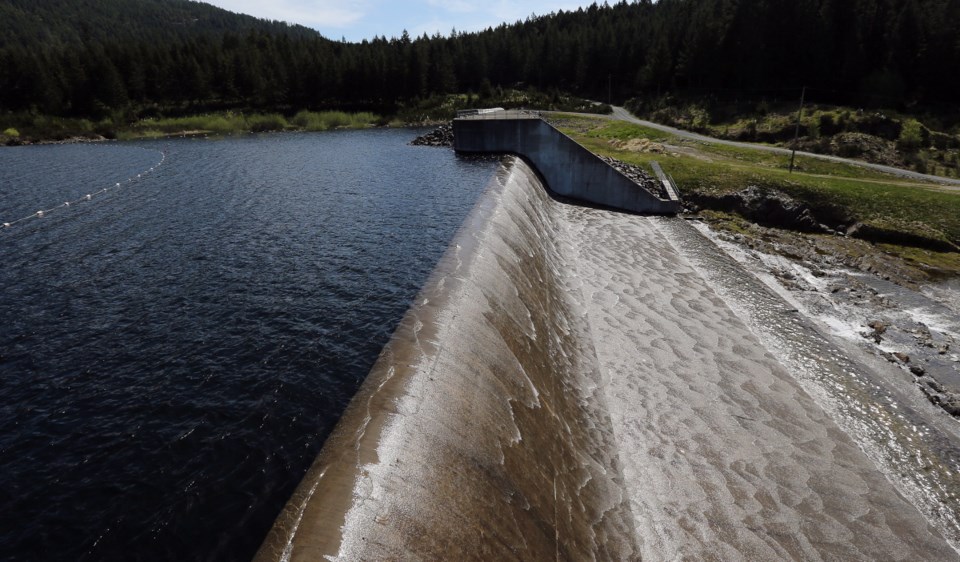 There’s a reason why Greater Victoria is still dealing with just the usual minor water restrictions while other communities are taking much more severe measures.
There’s a reason why Greater Victoria is still dealing with just the usual minor water restrictions while other communities are taking much more severe measures.
It’s a result of the decision 20 years ago to raise the dam on the Sooke Lake reservoir. The five-metre addition and some other upgrades vastly increased the volume of stored water and gave the region far more comfort about supply than other parts of the coast currently have.
But it took a pitched battle with environmentalists who fought the project to the end and a huge political argument that eventually spread to the provincial government. That stalled the project through the worst drought in years and the water supply was on the brink of crisis before the work was finally finished.
The saga comes to mind partly because of the coast-wide drought that could drive other communities to the same sort of crisis this summer. It’s also worth noting in light of two other major public projects that have gone sideways lately.
Vancouver’s transit system looks ready to slip 10 years or more behind the times because of the political paralysis reflected in the referendum result. And Victoria is still 100 years out of date on sewage treatment, with the most recent push to install treatment stalled out because of local fights. Those are both measures of how difficult it is to get anything done across local boundaries. And they reinforce how much credit goes to the officials who pushed the reservoir expansion through.
It was started by the Greater Victoria Water District, an entity owned and operated by the four core municipalities, despite the region-wide service it provided. In the 1990s, a combination of growth estimates, usage rates and storage capacity started a push for an expansion. In the winter of 1995, water was flowing over the old dam at a rate of four million cubic metres a day, about a month’s worth of usage. Most projections suggested that some day, amounts like that would be needed.
But raising the dam also involved widening the reservoir’s footprint, which required logging and removal of an old rail line. The water district was already under the gun for logging operations it ran in the watershed as a sideline. The combination of logging and the potential for contamination from the railway ties attracted the attention of various groups who advocated either more studies or increased conservation instead.
The accumulation of arguments and agitation prompted the NDP government to appoint a special commissioner — David Perry — to review all the complaints about the GVWD in general, and the adequacy of public participation on supply issues.
When the report was received in early 1997, the government approved a delay in the dam project, while all the governance recommendations Perry made were imposed. Thirty-two million cubic metres of water spilled over the old dam over three weeks in January leading up to the announcement, what would have been a half-year’s supply.
Opponents of the dam popped champagne the day that move was made. But miffed local officials warned the delay could become a problem.
The water district was subsequently folded into the Capital Regional District and various land swaps and other changes were made. By 1999, the new model was up and running and officials recommitted to the dam project. But the two-year delay meant Victoria moved into the historic drought of 2000-01 with a reservoir that wasn’t big enough to cope with it.
It was two-thirds empty by the fall of 2000. And the dry winter barely got it two-thirds full by the spring of 2001. If consumption and rainfall rates had continued for another year, the reservoir would have been at six per cent capacity.
So the toughest water restrictions ever imposed in Victoria were announced in April. Stage 3 was declared in the spring and went through the fall and winter.
The dam was finished in 2003, with water down to one-third capacity by then. The size of the reservoir increased by 80 per cent; it gradually filled up and the crisis faded.
It could have been worse, and would be a lot worse today, if the dam hadn’t been raised.



